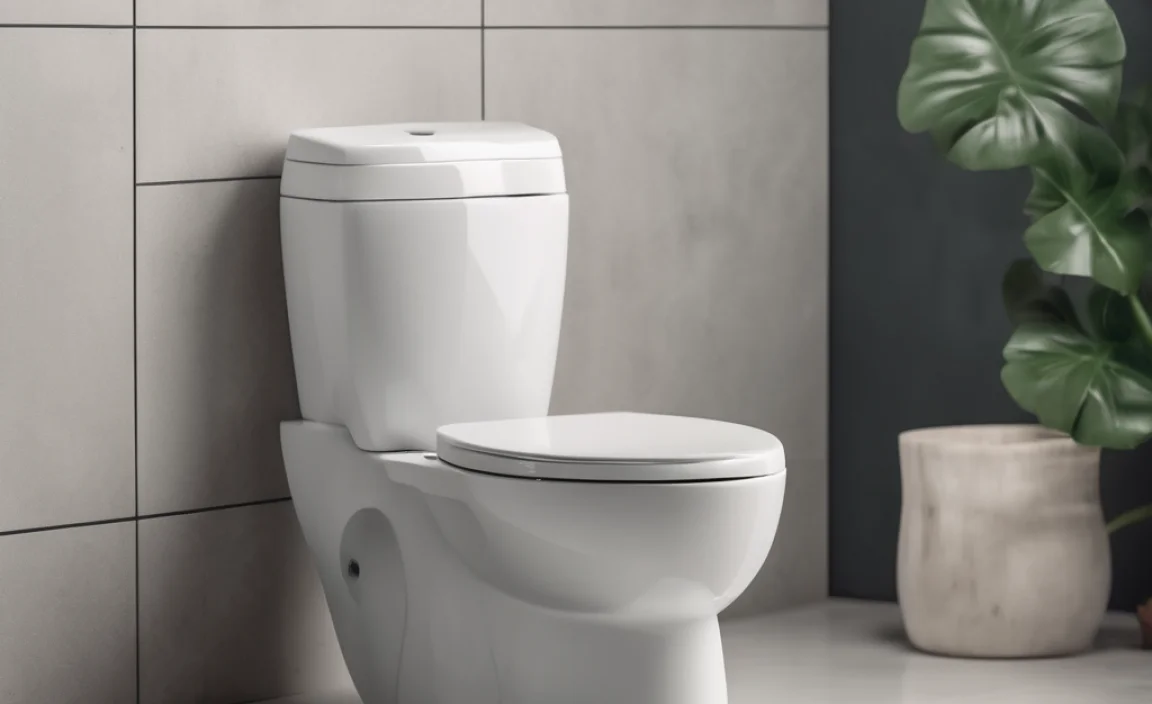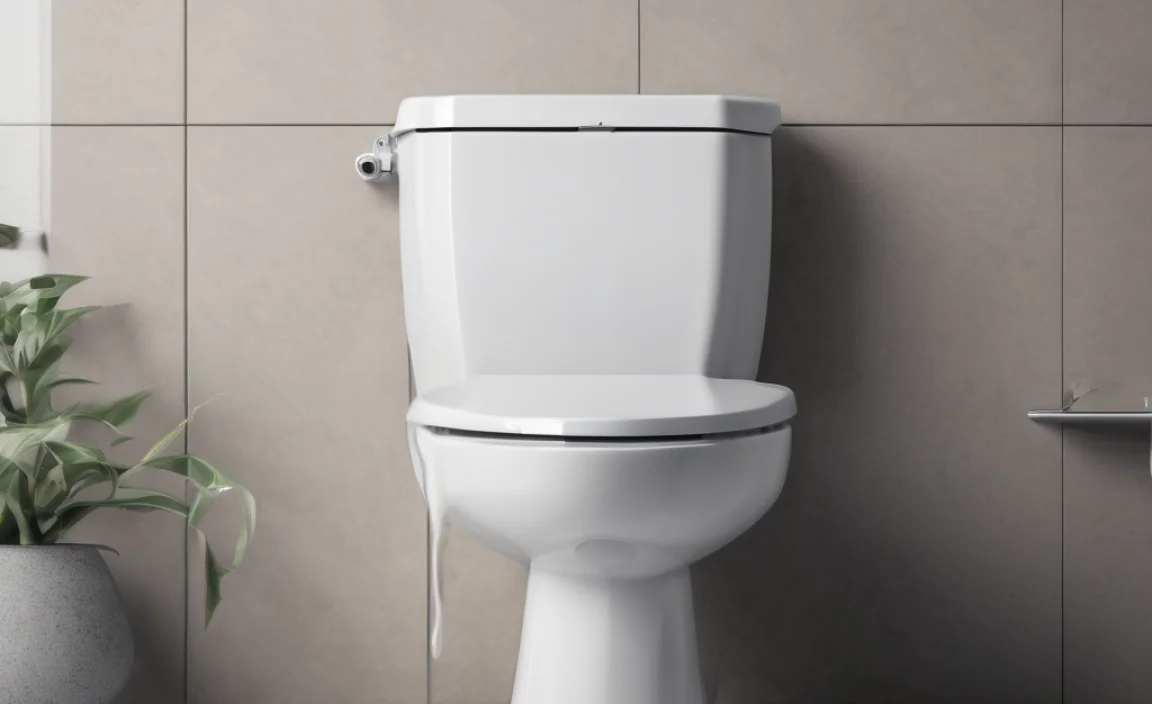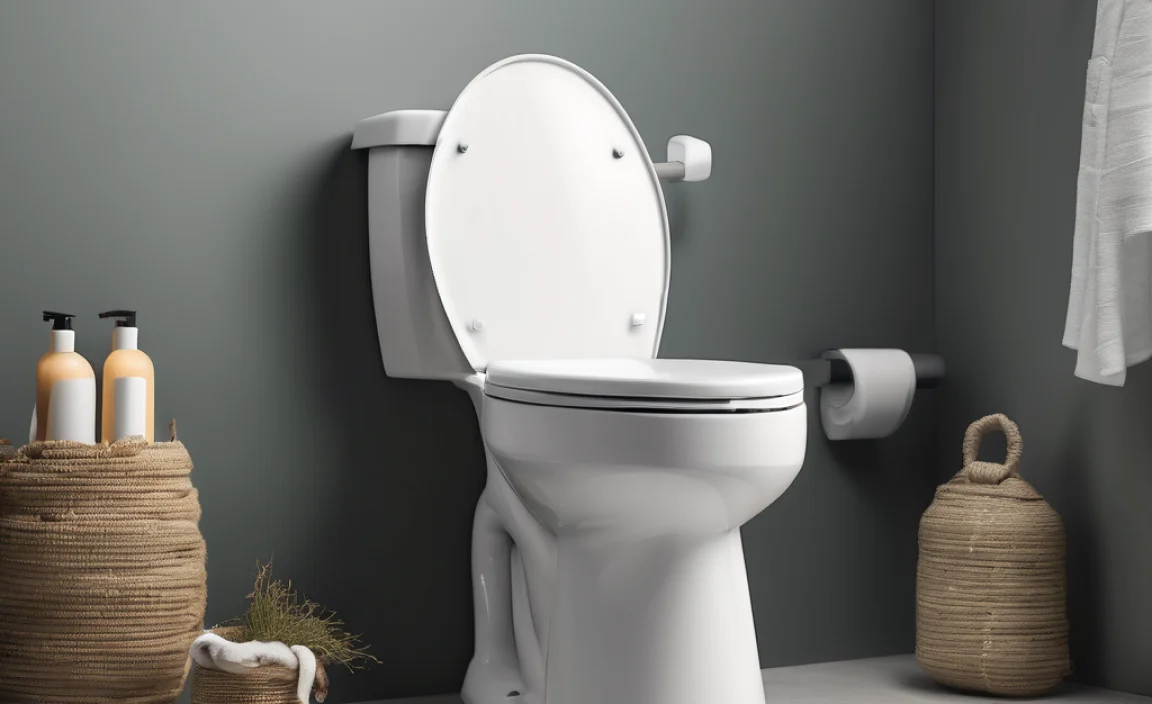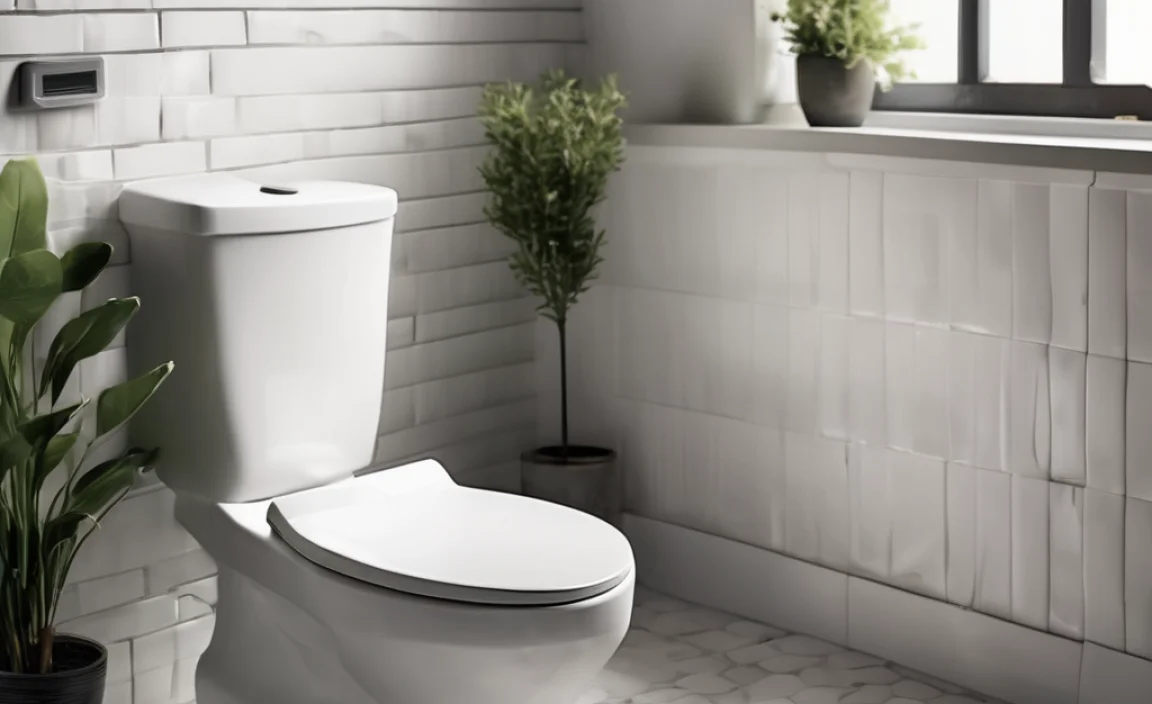Quick Summary
A toilet is typically rated at 4 Drainage Fixture Units (DFUs). This number helps plumbers and homeowners figure out the right size drain pipes needed for your plumbing system. Knowing the DFU value of each fixture, like sinks, showers, and toilets, ensures everything drains properly without backups. Understanding DFUs is key to a smoothly running and code-compliant plumbing system!
Ever wondered why your toilet sometimes seems to take forever to flush, or why your shower pressure drops when someone flushes? It might be because of something called Drainage Fixture Units, or DFUs. It sounds complicated, but it’s really just a way to measure how much drain your plumbing fixtures need. Getting it right prevents slow drains and other plumbing headaches.
In this guide, we’ll break down what DFUs are, how they relate to your toilet, and why they matter. We’ll walk through it step by step, so you’ll understand how to keep your plumbing flowing smoothly. Let’s dive in and make sense of DFUs together!
Understanding Drainage Fixture Units (DFUs)

Let’s start with the basics. A Drainage Fixture Unit (DFU) is a measure of how much load a plumbing fixture puts on your drainage system. Each fixture, like a sink, toilet, or shower, gets a DFU value. This value helps plumbers size drain pipes properly.
Think of it like this: each plumbing fixture “asks” the drain system for a certain amount of drainage capacity. The DFU value is how we measure that “ask.” The higher the DFU, the more drainage it needs.
Why DFUs Matter
DFUs are important for a few key reasons:
- Preventing Backups: If your drain pipes are too small for the total DFU load, you’ll get backups.
- Ensuring Proper Drainage: Correctly sized pipes mean everything drains quickly and efficiently.
- Meeting Plumbing Codes: Most local plumbing codes require you to follow DFU guidelines to ensure safety and efficiency.
How DFUs are Determined
DFU values are based on how quickly a fixture drains and how often it’s used. For example, a toilet, which flushes a large amount of water quickly, has a higher DFU value than a bathroom sink, which drains more slowly. These values are standardized in plumbing codes, so everyone is on the same page.
The DFU Value of a Toilet

So, how many DFUs is a toilet? A standard toilet is typically rated at 4 DFUs. This is a crucial number when planning or modifying your plumbing system. But, let’s get into the details and why this number is so important.
Why Toilets Have a High DFU Value
Toilets have a relatively high DFU value compared to other fixtures because they:
- Use a lot of water: Toilets flush a significant amount of water at once.
- Drain Quickly: The water is discharged rapidly to clear waste effectively.
- Are Used Frequently: Toilets are one of the most frequently used plumbing fixtures in a home.
Variations in Toilet DFU Values
While 4 DFUs is standard, there can be some variations depending on the type of toilet:
- Low-Flow Toilets: Some low-flow or high-efficiency toilets might have a slightly lower DFU value, around 3 DFUs, because they use less water per flush.
- Older Toilets: Older, less efficient toilets might effectively use more than 4 DFUs due to their higher water usage.
- Commercial Toilets: Commercial toilets, especially those with flush valves, can have significantly higher DFU values, sometimes as high as 6 DFUs or more.
Calculating Total DFU Load

Now that you know a toilet is typically 4 DFUs, let’s talk about how to calculate the total DFU load for your plumbing system. This is essential when adding new fixtures or modifying existing plumbing.
Step-by-Step Calculation
- List All Fixtures: Make a list of all the plumbing fixtures connected to the drain line you’re evaluating.
- Assign DFU Values: Assign the appropriate DFU value to each fixture. Here’s a handy table:
| Fixture | DFU Value |
|---|---|
| Toilet | 4 |
| Bathroom Sink | 1 |
| Kitchen Sink | 2 |
| Shower | 2 |
| Bathtub | 2 |
| Washing Machine | 3 |
- Add Them Up: Add up all the DFU values to get the total DFU load.
Example Calculation
Let’s say you have a bathroom with a toilet, a sink, and a shower:
- Toilet: 4 DFUs
- Sink: 1 DFU
- Shower: 2 DFUs
Total DFU load: 4 + 1 + 2 = 7 DFUs
Matching DFU Load to Pipe Size
Once you know the total DFU load, you need to make sure your drain pipes are large enough to handle it. Plumbing codes provide tables that specify the minimum pipe size for a given DFU load. These tables vary slightly by location, so it’s always best to consult your local plumbing code or a qualified plumber.
| Pipe Diameter (inches) | Maximum DFU Load |
|---|---|
| 1 1/2 | 3 |
| 2 | 6 |
| 3 | 20 |
| 4 | 48 |
For our example bathroom with a total DFU load of 7, you would need at least a 3-inch drain pipe.
Common Plumbing Scenarios and DFU Considerations

Let’s explore some common plumbing scenarios where understanding DFUs can be a lifesaver.
Adding a New Bathroom
When adding a new bathroom, you need to make sure your existing plumbing system can handle the additional load. Here’s what to consider:
- Calculate the New DFU Load: Add up the DFU values for all the fixtures in the new bathroom.
- Check Existing Pipe Capacity: Determine the maximum DFU load that your existing drain pipes can handle.
- Upgrade if Necessary: If the new DFU load exceeds the capacity of the existing pipes, you’ll need to upgrade the pipes to a larger size.
Replacing an Old Toilet
Replacing an old toilet with a new one is usually straightforward, but there are a few things to keep in mind:
- Check DFU Value: Make sure the new toilet has a similar DFU value to the old one. If you’re switching to a low-flow model, it might have a slightly lower DFU value, which is usually fine.
- Inspect the Drain Line: While you have the toilet removed, inspect the drain line for any signs of damage or blockage.
Dealing with Slow Drains
If you’re experiencing slow drains, it could be a sign that your drain pipes are undersized for the DFU load. Here’s what to do:
- Evaluate Your Plumbing System: Calculate the total DFU load for all the fixtures connected to the drain line.
- Check Pipe Sizes: Verify that the drain pipes are the correct size for the DFU load, according to your local plumbing code.
- Consider Upgrading: If the pipes are undersized, you might need to upgrade them to a larger size.
Tools and Resources for DFU Calculations

Calculating DFUs might seem intimidating, but there are plenty of tools and resources available to help you out.
Online DFU Calculators
Several websites offer free DFU calculators. Just enter the number and type of fixtures, and the calculator will automatically determine the total DFU load. Here are a few options:
- Online Plumbing Code Calculators: Many plumbing code websites offer DFU calculators as part of their resources.
- DIY Plumbing Websites: Look for calculators on websites dedicated to DIY plumbing projects.
Plumbing Code Books
Your local plumbing code book is an invaluable resource for DFU information. It contains tables that specify the DFU values for various fixtures and the minimum pipe sizes for different DFU loads. You can usually find these books at your local library or online. The International Plumbing Code is a good resource: International Plumbing Code Chapter 7: Sanitary Drainage
Consulting a Plumber
If you’re unsure about any aspect of DFU calculations or plumbing modifications, it’s always best to consult a qualified plumber. They can assess your plumbing system, calculate the DFU load, and recommend the appropriate pipe sizes. They can also ensure that your plumbing work complies with local codes.
Finding a good plumber is easy. Check online reviews, ask for recommendations from friends or neighbors, and make sure they are licensed and insured. A professional plumber can save you time, money, and potential headaches down the road.
Tips for Efficient Plumbing Design
Designing an efficient plumbing system involves more than just calculating DFUs. Here are some tips to help you optimize your plumbing design:
Minimize Pipe Lengths
Shorter pipe lengths reduce friction and improve drainage. Try to locate fixtures close to the main drain line whenever possible.
Use Proper Pipe Slopes
Drain pipes need to have a slight slope to ensure that water flows properly. A general rule of thumb is to use a slope of ¼ inch per foot.
Maintaining the correct slope is essential for preventing clogs and backups. Too little slope and the water will drain slowly, allowing solids to settle in the pipe. Too much slope and the water will run too quickly, leaving solids behind.
Avoid Sharp Bends
Sharp bends in drain pipes can restrict flow and increase the risk of clogs. Use gradual bends whenever possible, typically with 45-degree fittings instead of 90-degree fittings.
Consider Future Needs
When designing your plumbing system, think about potential future needs. If you plan to add a new bathroom or laundry room in the future, it’s a good idea to size your drain pipes accordingly. This can save you the hassle and expense of upgrading your plumbing later on.
Troubleshooting Common DFU-Related Issues
Even with careful planning, you might encounter some DFU-related issues. Here are some common problems and how to troubleshoot them:
Slow Drains
If your drains are consistently slow, it could be a sign of an undersized drain pipe or a partial blockage. Start by checking for clogs in the drain line. If that doesn’t solve the problem, you might need to upgrade the drain pipe to a larger size.
Gurgling Sounds
Gurgling sounds in your drain pipes can indicate a venting issue. Make sure your plumbing system has adequate venting to allow air to enter the drain lines and prevent a vacuum from forming. Check that vent pipes are not blocked by debris or snow.
Proper venting is crucial for maintaining consistent water flow. Without adequate venting, the water can create a vacuum that slows down drainage and causes those annoying gurgling sounds.
Sewage Odors
Sewage odors can be a sign of a dried-out P-trap. The P-trap is the U-shaped pipe under your sink or toilet that holds water and prevents sewer gases from entering your home. If the P-trap dries out, sewer gases can escape. To fix this, simply run water down the drain to refill the P-trap.
Multiple Fixtures Draining Slowly
If multiple fixtures are draining slowly at the same time, it could be a sign of a main drain blockage or an undersized main drain line. Start by checking the main drain cleanout for any signs of blockage. If the problem persists, you might need to call a plumber to inspect the main drain line with a camera.
Safety Precautions When Working with Plumbing
Working with plumbing can be risky, so it’s important to take the necessary safety precautions:
Wear Safety Glasses
Protect your eyes from splashes and debris by wearing safety glasses whenever you’re working with plumbing.
Wear Gloves
Protect your hands from chemicals and bacteria by wearing gloves. Latex or nitrile gloves are a good choice.
Turn Off the Water Supply
Before starting any plumbing work, turn off the water supply to the fixture or the entire house. This will prevent flooding and water damage.
Use the Right Tools
Use the right tools for the job. Using the wrong tools can damage pipes and fittings, and it can also be dangerous.
Follow Plumbing Codes
Always follow local plumbing codes when working with plumbing. This will ensure that your work is safe and compliant.
Plumbing codes are in place to protect you and your community. They ensure that plumbing systems are installed and maintained properly, reducing the risk of water contamination, leaks, and other hazards.
FAQ About Drainage Fixture Units and Toilets
What does DFU stand for in plumbing?
DFU stands for Drainage Fixture Unit. It’s a measure of how much load a plumbing fixture puts on the drainage system.
Is a lower DFU better?
Not necessarily. A lower DFU means the fixture requires less drainage capacity. However, you need to ensure the total DFU load is properly matched to the drain pipe size for efficient drainage.
Do all toilets have the same DFU value?
No, but most standard toilets are rated at 4 DFUs. Low-flow models might be slightly lower, while commercial toilets can be higher.
How do I find the DFU value of a specific fixture?
Check the manufacturer’s specifications or your local plumbing code book. These resources provide DFU values for various plumbing fixtures.
Can I add more fixtures to my plumbing system without upgrading the pipes?
It depends. Calculate the total DFU load of the new fixtures and compare it to the capacity of your existing drain pipes. If the load exceeds the capacity, you’ll need to upgrade the pipes.
What happens if my drain pipes are too small for the DFU load?
You’ll likely experience slow drains, backups, and other plumbing problems. It’s important to ensure your drain pipes are properly sized for the DFU load.
Where can I find my local plumbing codes?
You can usually find your local plumbing codes on your city or county government website, or at your local library. These codes outline the specific requirements for plumbing systems in your area.
Conclusion
Understanding Drainage Fixture Units (DFUs) is essential for maintaining a smoothly running plumbing system. Knowing that a toilet is typically rated at 4 DFUs, and how to calculate the total DFU load, empowers you to make informed decisions about your plumbing. Whether you’re adding a new bathroom, replacing an old toilet, or troubleshooting slow drains, DFU knowledge can save you time, money, and frustration. By following the tips and guidelines in this article, you can confidently tackle your plumbing projects and ensure that everything drains properly.

